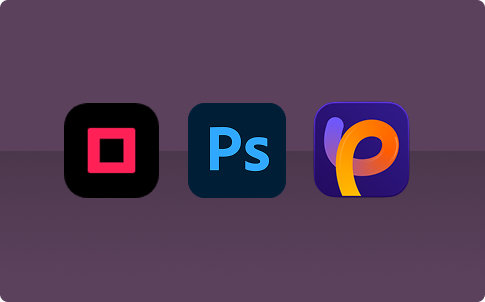The Importance of Image Quality in Direct Mail, Digital Ads, and Email Campaigns
In the dynamic world of healthcare marketing, the quality of images used in both print and digital media significantly influences audience engagement, brand perception, and overall campaign success. At Donlon Agency, where we specialize in crafting monthly campaigns for healthcare clients — including hospitals and cancer centers — the impact of image quality is particularly evident.
As a creative director at Donlon Agency, I can tell you firsthand that the quality of images we use in marketing campaigns can make or break the success of those campaigns. Whether it’s direct mail (print), email marketing, or digital media like Meta and Google ads, high-quality visuals are essential to capturing attention, conveying professionalism, and driving engagement. Studies across industries have quantified this impact. For example, high-quality product images have been shown to increase conversion rates by up to 60%.
In the healthcare and hospital marketing space — where trust, clarity, and precision are paramount — poor image quality can undermine everything we've worked for. Let's take a closer look at why image quality matters so much and how it impacts your campaigns, along with some insights into how AI is changing the game for image enhancement.
The Importance of Image Quality in Direct Mail Campaigns
Direct mail is one of the most traditional forms of marketing, but it remains incredibly effective — especially when executed with high-quality visuals. A clear, high-resolution image printed on quality stock increases your brand’s selling power. The images you choose for direct mail pieces, such as brochures, postcards, and packages, need to stand out and grab the attention of recipients immediately.
Here’s why image quality in print matters:
- Resolution: Low-resolution images (anything under 300 DPI) look pixelated or blurry when printed. This not only detracts from the professionalism of the campaign, but can also make your healthcare services appear untrustworthy.
- Impact on Perception: In healthcare marketing, first impressions are everything. If a potential audience sees a blurry image, it could affect how they view the quality of the care you provide. High-quality images, on the other hand, help create an impression of competence, trustworthiness, and reliability.
- Composition: Well-composed images with appropriate lighting and framing enhance visual appeal, making your materials more compelling and easier to understand.
- Response Rates: Overall, well-produced visuals in direct mail help “grab attention, create interest, and prompt action” leading to higher response and conversion rates. When the image quality is poor, however, the likelihood of a recipient engaging with the content drops dramatically. A picture may say a thousand words, but a pixelated one might say nothing at all.
The Importance of Image Quality in Digital and Digital Media
In the world of digital marketing, images also play a crucial role — especially in ads and email marketing campaigns. On the digital landscape, visuals are often the first thing people see, and poor-quality images can harm both your campaign performance and your brand reputation.
Here’s how image quality affects your digital efforts:
- Emails: When sending an email campaign, the images need to be sharp and properly sized. Low-quality images can negatively affect open rates, and poorly sized images may disrupt the layout or look distorted when viewed on different devices. Marketers are advised to “avoid pixelated, low-resolution, or blurry images at all costs,” as these appear unprofessional and may prompt readers to distrust or ignore the email. A grainy or blurry image can create a disconnect between your brand’s promise and how it’s perceived, ultimately leading to higher bounce rates and reduced engagement.
- Digital Ads (Google & Meta): In platforms like Google Ads or Meta (Facebook/Instagram), images are often the focal point of your campaign. Ads with clear, high-resolution visuals typically outperform those with blurry or pixelated images. Meta’s best practices suggest using images taken with a high-quality camera or HD video because consumers associate low-quality, grainy ads with low-quality products. Moreover, digital platforms like Google and Meta use algorithms that rely on image recognition, so an unoptimized image could lower your ad’s reach and performance.
- Optimized Visuals: Proper image sizing for each platform is crucial. Using images that are too large can slow download times, while images that are too small may appear stretched or compressed. High-quality, properly sized images perform better and lead to more engagement and higher conversion rates.




